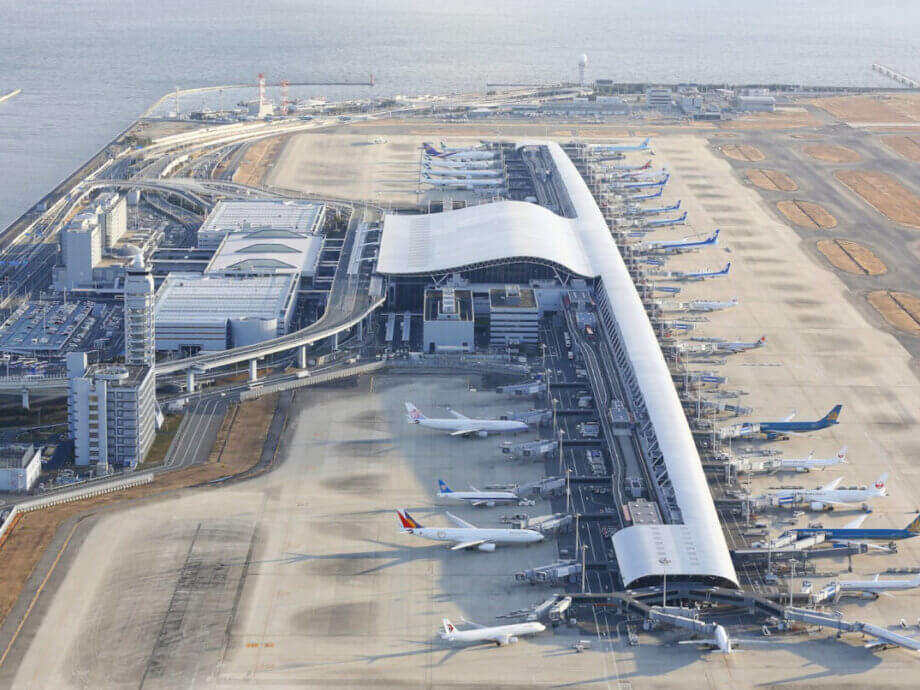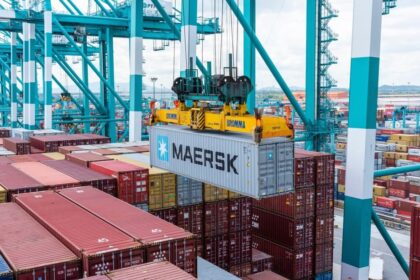The Ambitious Vision Behind Kansai International Airport
Kansai International Airport (KIX), located on two artificial islands in Osaka Bay, Japan, stands as one of the most ambitious and expensive civil engineering projects of the late 20th century. Opened in 1994, the airport was designed to relieve congestion at Osaka’s landlocked Itami Airport and to minimize noise pollution for city residents. Its offshore location, innovative design, and advanced technology have earned it international accolades for efficiency, architecture, and baggage handling. Yet, beneath its celebrated surface, Kansai faces a persistent and potentially existential challenge: it is slowly sinking into the sea.
- The Ambitious Vision Behind Kansai International Airport
- Why Build an Airport on Water?
- Engineering the Impossible: How Kansai Was Built
- The Sinking Problem: Faster and Deeper Than Expected
- Why Is Kansai Sinking?
- Engineering Solutions and Ongoing Maintenance
- Natural Disasters: Typhoons and Earthquakes
- Economic and Strategic Importance
- Lessons for Future Megaprojects
- Can Kansai Be Saved?
- Broader Implications: A Warning for Global Infrastructure
- In Summary
Why Build an Airport on Water?
By the 1960s, Osaka’s rapid urban growth left little room for airport expansion. Surrounded by mountains and dense development, the city’s only viable solution was to build offshore. After two decades of planning, construction began in 1987. The project required the creation of two massive islands, protected by an 11-kilometer seawall and connected to the mainland by a billion-dollar bridge. The total cost soared to $14 billion at the time—equivalent to nearly $40 billion today after expansions and inflation.
The airport’s offshore location offered several advantages:
- It eliminated the need to relocate residents or compensate for noise pollution.
- It allowed for 24-hour operations without disturbing the city.
- It provided a blank slate for innovative engineering and design.
However, building on reclaimed land in a bay with a soft, alluvial clay seabed introduced unique and ongoing risks.
Engineering the Impossible: How Kansai Was Built
The seabed beneath Kansai is composed of loose clay and silt—materials that behave like a saturated sponge under pressure. To create a stable foundation, engineers:
- Laid five feet of sand atop the clay seabed.
- Installed 2.2 million vertical sand-filled pipes (sand drains), each nearly 16 inches in diameter, to accelerate drainage and soil consolidation.
- Added over 200 million cubic meters of fill material, including soil dredged from the bay, quarried rock, and imported earth.
- Constructed a seawall from 48,000 concrete blocks and rubble, anchored in steel chambers weighing hundreds of tons.
After each stage of filling, construction paused to allow the new layers to settle and compact. The goal was to ensure the islands would stabilize at least 13 feet above sea level—the minimum elevation needed to prevent flooding if the seawall was breached.
To accommodate inevitable subsidence, the terminal building was designed by architect Renzo Piano to rest on 900 hydraulic jacks. These can be adjusted to compensate for uneven settling, and the runways were paved with flexible asphalt to absorb shifts without cracking.
The Sinking Problem: Faster and Deeper Than Expected
Despite meticulous planning, the rate and extent of sinking have far exceeded initial estimates. Engineers predicted the islands would settle by about eight meters (26 feet) over 50 years. In reality, the first island had already sunk 27 feet by 1990—before the airport even opened. Since 1994, Kansai has sunk a total of approximately 38 feet (11.5 meters), with some areas of the second island dropping over 57 feet (17.5 meters) since landfill began.
Recent data shows the rate of subsidence is slowing, now averaging less than 10 centimeters (4 inches) per year. However, the sinking is not uniform. Some sections are descending faster than others, creating engineering headaches and requiring constant monitoring and adjustment. The central section of the terminal, for example, is believed to be sinking more rapidly than the outer edges.
Why Is Kansai Sinking?
The primary cause is the composition of the seabed. The alluvial clay beneath the airport is highly compressible and retains water. When the massive weight of the artificial islands was added, water was squeezed out of the clay, causing it to compact and the surface to sink. Although sand drains were installed to speed up this process, the clay had not fully consolidated when construction began, leading to continued and uneven settlement.
Other contributing factors include:
- The sheer volume and weight of the fill material—far greater than the weight of airport buildings or aircraft.
- Underestimation of settlement rates in early engineering models.
- Ongoing natural compaction of the seabed, which may continue for decades or even centuries.
Engineering Solutions and Ongoing Maintenance
To keep Kansai operational, engineers have implemented a range of mitigation measures:
- Hydraulic jacks beneath the terminal allow for periodic adjustments to maintain level floors.
- Flexible asphalt runways can be resurfaced and re-leveled as needed.
- Over $150 million has been spent raising and reinforcing the seawall to protect against flooding.
- Continuous monitoring of subsidence rates at dozens of points across both islands.
Despite these efforts, the cost and complexity of maintaining the airport are significant. Every two years, the hydraulic jacks are checked and adjusted. The seawall has been raised by an additional 2.7 meters following major flooding events. Yet, some engineers predict that by 2056, sections of the airport could reach sea level, especially if current trends continue and no further interventions are made.
Natural Disasters: Typhoons and Earthquakes
Kansai’s location in Osaka Bay exposes it to extreme weather and seismic risks. In 1995, the airport survived the devastating Kobe earthquake with minimal damage, a testament to its robust design. However, in September 2018, Typhoon Jebi—the strongest typhoon to hit Japan in 25 years—overwhelmed the seawall and flooded the runway, stranding 5,000 people and shutting down the airport for two weeks. The disaster revealed a critical design flaw: key infrastructure, including the disaster response center and electrical substation, was located in the basement and was quickly inundated.
Following this event, authorities invested further in raising the seawall and improving emergency preparedness, including regular earthquake and tsunami drills for staff. Nevertheless, the airport remains vulnerable to future storms and rising sea levels driven by climate change.
Economic and Strategic Importance
Despite its challenges, Kansai International Airport is a vital hub for Japan’s economy and global connectivity. It serves as a base for major airlines such as All Nippon Airways, Japan Airlines, and Nippon Cargo Airlines, linking Osaka to 91 cities in 25 countries. In 2024, the airport handled over 30 million passengers, and it is expected to play a key role in the upcoming Osaka Expo 2025, which will bring millions of additional visitors to the region.
The airport’s continued operation is crucial for tourism, business, and logistics in western Japan. Its success has also inspired similar projects worldwide, including airports in Hong Kong, Singapore, and Dubai, all built on reclaimed land.
Lessons for Future Megaprojects
Kansai’s experience offers important lessons for future infrastructure projects, especially those involving land reclamation:
- Allowing longer periods for soil settlement before construction can reduce long-term subsidence.
- Advanced modeling and monitoring are essential to anticipate and manage uneven sinking.
- Climate change and rising sea levels must be factored into design and maintenance plans.
- Emergency infrastructure should be located above ground level to avoid flooding risks.
Hiroo Ichikawa, professor emeritus of urban planning and policy at Meiji University, reflects on the project’s legacy:
“When it came to building a second airport for Osaka, there were few good options. There was very limited space on the mainland for a large construction project and nearby residents would have been affected by noise and late-night flights, so it was decided to build offshore.”
He adds that while mistakes were made, the project has provided valuable lessons for similar developments, such as Chubu Centrair Airport near Nagoya, which has experienced fewer subsidence issues thanks to improved engineering techniques.
Can Kansai Be Saved?
Engineers and airport authorities remain cautiously optimistic. The rate of sinking has slowed, and ongoing investments in maintenance and infrastructure upgrades have kept the airport operational and safe. Plans for the future include:
- Further reinforcement of the seawall and foundation.
- Upgrading hydraulic stabilization systems.
- Exploring seabed reinforcement techniques.
- Considering expansion or upgrades to nearby airports as contingency options.
However, all these solutions come with significant financial and logistical challenges. The cost of keeping Kansai above water may eventually outweigh the benefits, especially as climate change increases the risk of extreme weather and sea level rise.
Broader Implications: A Warning for Global Infrastructure
Kansai International Airport’s story is not unique. As cities around the world turn to land reclamation to solve space constraints, the risks of building on unstable ground are becoming more apparent. Airports in Hong Kong, Singapore, and the Maldives face similar challenges, and the lessons from Kansai are increasingly relevant as climate change accelerates.
For travelers and airlines, the situation underscores the importance of contingency planning and infrastructure resilience. For engineers and policymakers, it highlights the need for sustainable, forward-thinking design that accounts for both natural and human-made risks.
In Summary
- Kansai International Airport is a globally recognized engineering marvel built on two artificial islands in Osaka Bay.
- The airport has sunk approximately 38 feet since opening in 1994, far exceeding initial projections.
- Subsidence is caused by the compression of soft alluvial clay beneath the islands, compounded by the immense weight of the fill material.
- Engineers have implemented hydraulic jacks, flexible runways, and raised seawalls to manage the sinking, but maintenance is costly and complex.
- Natural disasters, such as Typhoon Jebi in 2018, have exposed vulnerabilities in the airport’s design and location.
- Despite these challenges, Kansai remains a vital hub for Japan’s economy and international travel.
- The airport’s experience offers critical lessons for future infrastructure projects, especially those involving land reclamation and climate resilience.
- Ongoing monitoring, engineering innovation, and significant investment will be required to keep Kansai operational in the decades to come.












